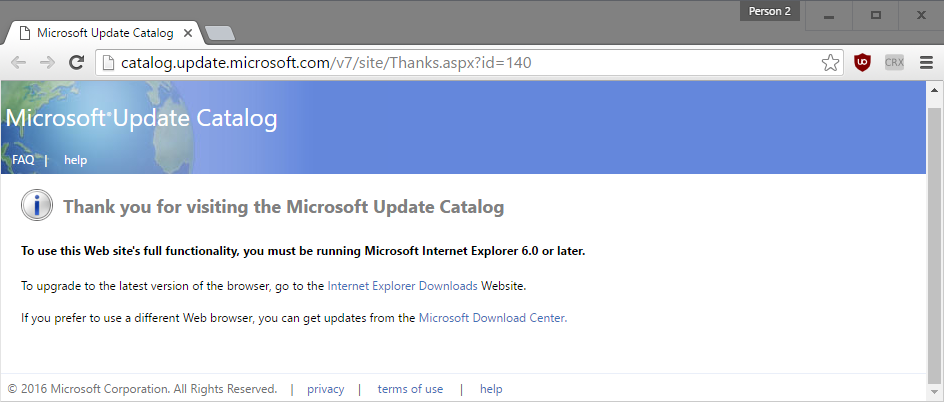Microsoft limits direct update downloads
Microsoft announced on April 29, 2016 on the official Microsoft Security Response Center (MSRC) blog that it won't make available some updates via the company's Download Center starting May 10, 2016.
When it comes to updates for the Windows operating system, Windows users had several options to download and install the updates that Microsoft created.
Windows Update is without doubt the primary source for updates since Windows is configured to check and download updates automatically by default.
While that is the most convenient method to obtain updates for Windows, it may not be the safest option from a user's point of view.
Windows 7 and 8.x users for instance who don't want to upgrade to Windows 10 need to make sure that "get Windows 10" updates are not installed on their systems as the upgrade to Windows 10 may happen automatically afterwards.
Additionally, the past has shown that updates may break the operating system or some functionality. This can be something as simple as a driver update that is delivered through Windows Update, the removal of installed programs, or critical errors that block the operating system from booting.
It is recommended to research updates before they are installed which usually means disabling automatic updates and waiting hours or even days before updates are installed manually.
While you can uninstall Windows updates, and even block them, it is better to avoid this situation altogether by disabling automatic updates and researching updates before installing them.
Microsoft limits direct update downloads

Microsoft will block some updates from the Microsoft Download Center starting May 10. According to the post on the MSRC blog, security bulletins will point to the Microsoft Update Catalog when updates are not listed on the company's Download Center website.
Starting May 10, some updates will no longer be available from the Microsoft Download Center.
Security bulletins will continue to link directly to the updates, but will now point to the packages on the Microsoft Update Catalog for updates not available on the Microsoft Download Center.
This has the following implications:
- Windows users who download updates directly cannot use Microsoft's Download Center anymore for that exclusively as some/all security updates won't be listed on the site for download anymore.
- The Microsoft Update Catalog works only in Internet Explorer 6 or higher. Google Chrome, Mozilla Firefox and even Microsoft Edge cannot be used to use the service.
- It is unclear if the change affects only Security Bulletins, or if non-security updates are affected by the change as well.
- It is unclear right now whether Security ISO images will feature those updates.
- It is unclear if third-party update downloaders will find a way to cope with the situation to provide users with all updates.
As mentioned earlier, it is unclear why Microsoft makes the change. A theory is that the company prepares to make updates Windows Update exclusive for home users, as the Microsoft Update Catalog is designed for Enterprise and business customers.
For now, Windows users can use the Windows Update Catalog or third-party download software like WSUS Offline Update that still works to grab updates.
This article was first seen on ComTek's "TekBits" Technology News

- Log in to post comments